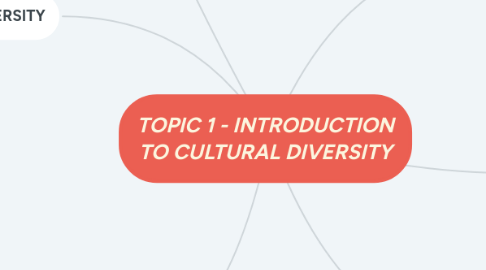TOPIC 1 - INTRODUCTION TO CULTURAL DIVERSITY
por Afifah Anuardi


1. CULTURE DIVERSITY
1.1. cultural or ethnic groups within a society
1.2. differences among people because of their race, or ethnic backgrounds, language, dress and traditions
1.3. different cultures, as opposed to monoculture
2. DIVERSITY
2.1. relates to individuals and groups with different socioeconomic backgrounds and physical
2.2. differences among people but not limited to race, ethnicity, gender, age, social class
2.3. each individuals is unique, and recognizing our individual differences
3. BENEFITS OF CULTURAL DIVERSITY
3.1. 1. Increase adaptability
3.1.1. adaptability is a soft skill that means being able to rapidly learn new skills and behaviours
3.2. 2. Broader service range
3.2.1. a diverse collection of skills and experience
3.3. 3. Variety of viewpoint
3.3.1. a diverse workplace that feels comfortable in communication
3.4. 4. More effective execution
3.4.1. build team unity
3.5. 5. Promote humanistic values
3.5.1. should be encouraged to think for themselves
3.6. 6. Improves productivity and profitability
3.6.1. relationship between output and input needed to create a product.
3.7. 7. Helps to create a pool of talent
3.7.1. employees exchange and learn each others positives and competencies
3.8. 8. Exchange of innovation ideas
3.8.1. An innovative working approach appeals to employees with higher levels of creativity and lateral thinking
